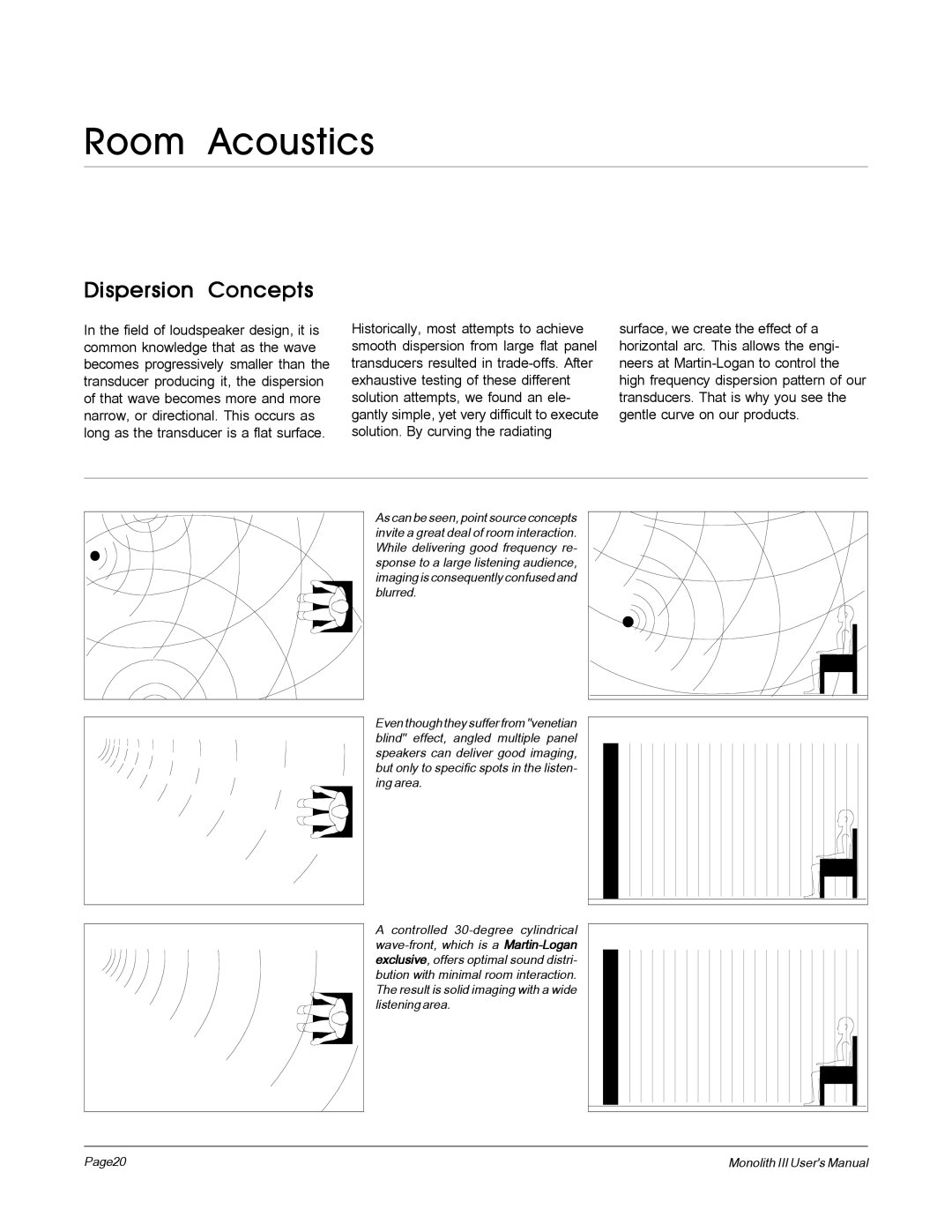
Room Acoustics
Dispersion Concepts
In the field of loudspeaker design, it is common knowledge that as the wave becomes progressively smaller than the transducer producing it, the dispersion of that wave becomes more and more narrow, or directional. This occurs as long as the transducer is a flat surface.
Historically, most attempts to achieve smooth dispersion from large flat panel transducers resulted in
surface, we create the effect of a horizontal arc. This allows the engi- neers at
As can be seen, point source concepts invite a great deal of room interaction. While delivering good frequency re- sponse to a large listening audience, imaging is consequently confused and blurred.
Even though they suffer from "venetian blind" effect, angled multiple panel speakers can deliver good imaging, but only to specific spots in the listen- ing area.
| A controlled |
| |
| exclusive, offers optimal sound distri- |
| bution with minimal room interaction. |
| The result is solid imaging with a wide |
| listening area. |
Page20 | Monolith III User's Manual |
